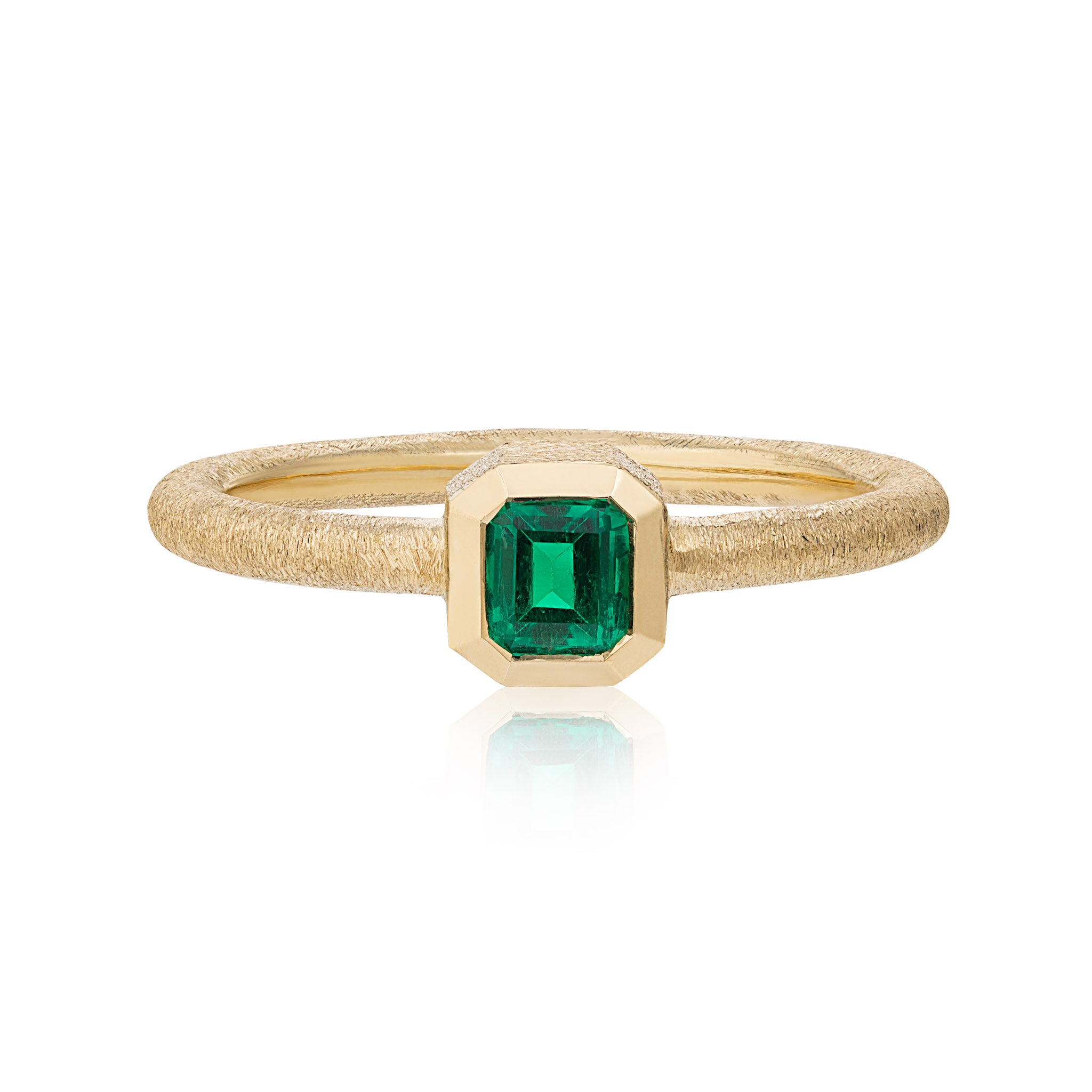
For centuries people have relied upon visiting a jeweller’s shop to find a suitable engagement ring. This limited you to one of the examples held in the shop’s inventory and bespoke engagement rings were a rarity. In the twenty-first century the rise of digital channels has opened up a world of possibility for a truly global audience. It is now possible to search online and choose between an almost infinite array of designs, styles, settings and stones. Bespoke engagement rings have become increasingly popular, as have coloured gemstones. Despite the progress of technology, most customers still prefer the design process to be undertaken by a master craftsman by hand. This is the best way to ensure the uniqueness of the finished piece, with one of a kind hand finished individuality. The trend within the mid to higher end of the market is also towards hand made bespoke jewellery from independent small businesses registered in England. Whilst yellow gold remains the most popular choice of metal, 18 carat rose gold, white gold and platinum are also claiming a significant share of the market.
When it comes to choosing the all-important centre stone, it is important to consider the 4 C’s. We will look at each of these in turn:
Colour
With stones such as emeralds, rubies and sapphires it is the colour that is the primary driver of the value of the gemstone (normally expressed in US Dollars per carat on the international market). With diamonds the colour is expressed with a letter from D-Z, D being the ‘whitest’ and Z the least ‘white.’ When the Gemmological Institute of America (GIA) devised the colour grading system they deliberately left ‘A-C’ off the chart in case diamonds that are ‘whiter’ than a D were ever discovered in the future (none ever were). With coloured gemstones it is the intensity of colour that drives value the most, with descriptors such as ‘vivid’ and ‘intense’ denoting the best colour saturation.
Clarity
Clarity refers to the transparency of the stone and the presence of inclusions (small imperfections caused by the presence of foreign objects in the stone’s crystalline structure). A gemstone is said to be ‘eye-clean’ if its inclusions cannot be seen with the naked eye. A ‘loupe-clean’ stone contains no inclusions visible under inspection with a loupe (a magnifying lens). The GIA grade diamond clarity from Flawless (F) to Included 3 (I3). However, the grading of the clarity of coloured gemstones is slightly more subjective and clarity enhancement is far more common. The GIA recognise three levels of emerald treatment for example: F1 (minor); F2 (moderate); F3 (significant).
Cut
Cut refers to a gemstone’s proportions, symmetry and polish and not to the shape of the stone (which is a commonly held misconception). The GIA assess a stone’s cut, polish and symmetry on a scale of Excellent, Very Good, Good, Fair and Poor.
Carat
Carat equals the mass, not necessarily the size, of a stone. One carat is equivalent to 0.2 grams, which is approximately the same as the mass of a paperclip. The price per carat of most gemstones rises exponentially as the size increases and it ‘jumps’ around key sizes, such as 1.0, 1.50, 2.0 carats etc.
Diamonds versus coloured gemstones
While diamonds are a girl’s best friend, it is worth exploring the world of colour when it comes to creating a bespoke engagement ring. From antiquity right up until the nineteenth century diamonds held less than a 50% share of the gemstone market. That changed when De Beers entered the fray and by the middle of the twentieth century 95% of engagement rings contained a diamond centre stone. Over recent decades this trend has started to reverse and colour is back! Boosted by the entry of more organised mining operators, such as Gemfields, the coloured stone market has rocketed in the twenty-first century, with coloured gemstone price increases far outstripping those of diamonds. As brands such as Fabergé, Van Cleef & Arpels, Cartier and many more expand their coloured gemstone collections the growth in demand for the big three coloured stones, ruby, sapphire and emerald, marches ever upwards. Many coloured stones are complimented well by diamonds, especially when set as a trilogy or halo design. The unique scintillation (or ‘sparkle’) produced by diamonds can also help refract light towards coloured centre stones.
High street or online?
Over the past decade a bewildering array of online jewellers have appeared and many have cut priced offers. While the traditional high street jeweller still commands the largest market share, the fundamentals of the market are shifting. In recent years ‘clicks and bricks’ retailers have carved a significant and growing niche into the market, offering click and buy functionality in a hybrid with face to face and personal interaction. It pays to look for a jeweller with strong, verified reviews and always ensure any item purchased is accompanied with a gemmological certificate. While most people have heard of the GIA, there are many other laboratories that offer a high standard of gemmological excellence. One of the best examples of these is the Gübelin Gem Lab in Lucerne, Switzerland. Founded by the ‘father’ of gemmology Eduard Josef Gübelin (1913 – 2005), Gübelin developed a comprehensive database covering almost every gemstone in the world. Other well renowned laboratories include SSEF in Basel, Switzerland, GCS Gem Lab in Mayfair, London, International Gemmological Institute (IGI) Antwerp, Belgium and of course the GIA in New York. Advances such as CAD (Computer Aided Design) and 3-D printing have also made it possible to visualise a bespoke ring before it is created.
Get in touch with us today and we will help you find your perfect bespoke engagement ring.


 (31)
(31)
